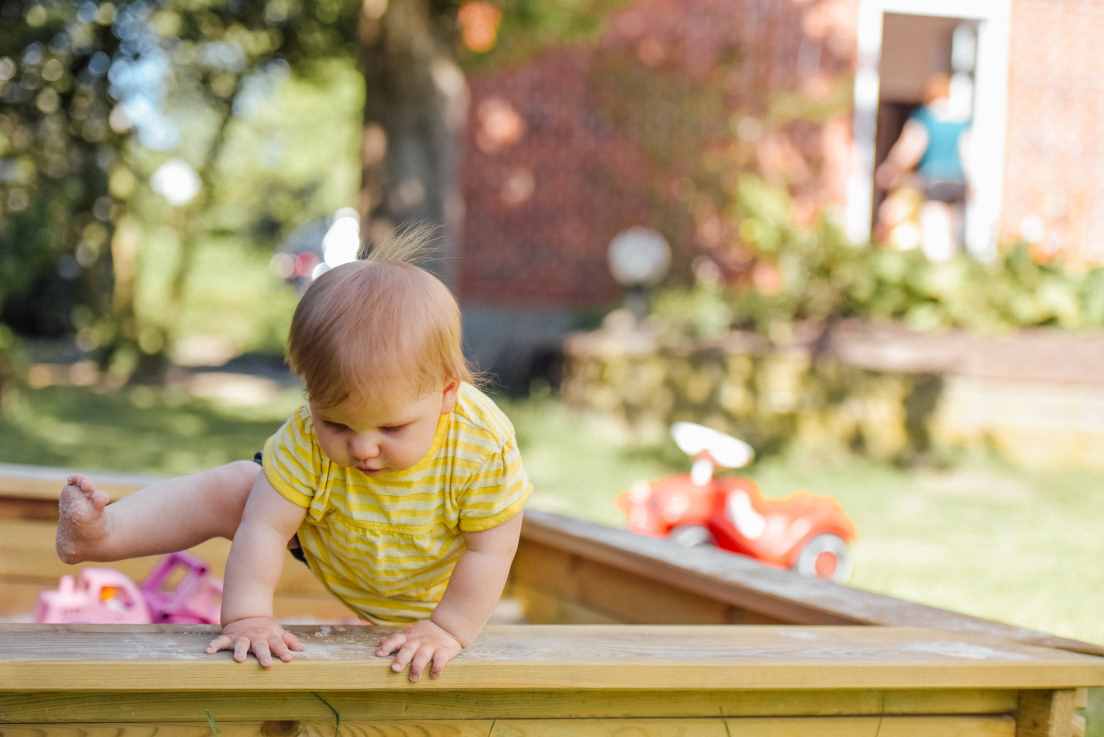Montessori education
Montessori Materials: Expert Tips, DIY Ideas, and More
Table of Contents
Introduction
The Montessori method places great emphasis on hands-on learning through purposeful activities. Specialized educational materials are essential tools in the Montessori classroom. Together with knowledgeable guidance from teachers, these beautifully designed materials enable children to learn concepts concretely.
This comprehensive guide explores the meaningful purpose behind Montessori materials. We discuss the different types available, their benefits, DIY ideas, and sourcing. With helpful insights and resources, this article aims to give parents, educators, and learners the knowledge to implement Montessori materials effectively.
The Philosophy Behind Montessori Materials
Dr. Maria Montessori based her educational approach on key principles derived from scientific observation of children’s development. Montessori materials embody these principles and serve specific purposes:
- Promote independence – Children choose activities independently and develop self-direction. Materials are designed for independent use.
- Support freedom of movement – Children can move freely and interact with tactile materials rather than sit at desks.
- Foster tactile learning – Hands-on materials allow concrete sensory exploration essential for cognitive growth.
- Provide autoeducation – Self-correcting aspects give children instant feedback so they can recognize and correct mistakes.
- Promote order and concentration – Materials have an organized, logical sequence that builds focus and concentration skills.
- Enable active engagement – Concrete materials captivate children’s interest and inspire them to actively participate in learning.
In short, Montessori materials apply Montessori principles to offer children developmentally appropriate, multi-sensory learning experiences.
Types of Montessori Materials
There are five main categories of Montessori materials:
1. Sensorial Materials
These materials educate the senses through activities like:
- Color tablets for visual discrimination of shades
- Sound boxes for auditory tone differentiation
- Textured fabrics for tactile sensation
- Smelling bottles to refine olfactory senses
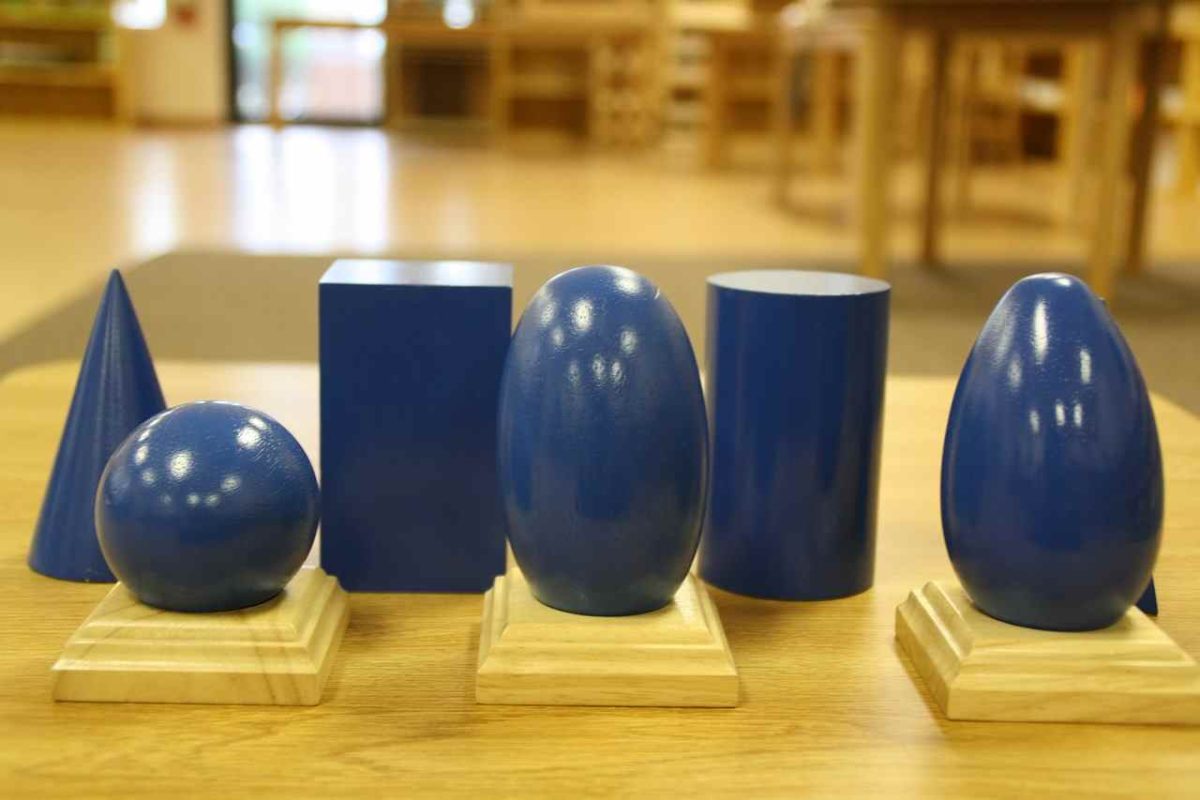
2. Practical Life Materials
Practical life materials cultivate real-life skills with activities like:
- Sweeping, dusting for room care
- Buttoning frames, zippers for dressing
- Pouring, scooping for food preparation
- Washing hands, cleaning tables for hygiene
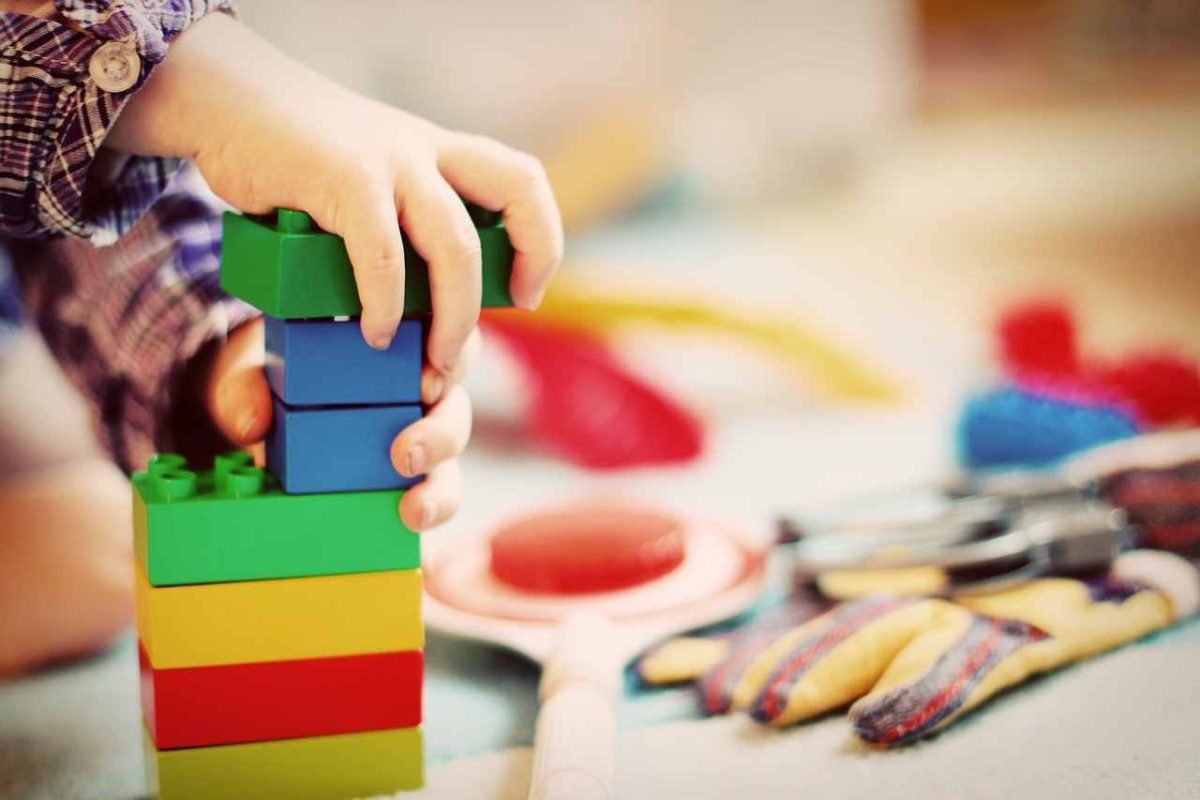
3. Language Materials
Language development is nurtured through materials like:
- Sandpaper letters for tactile letter recognition
- Object boxes and picture cards for vocabulary building
- Metal insets for pre-writing exercises
- Movable alphabets to form words and sentences
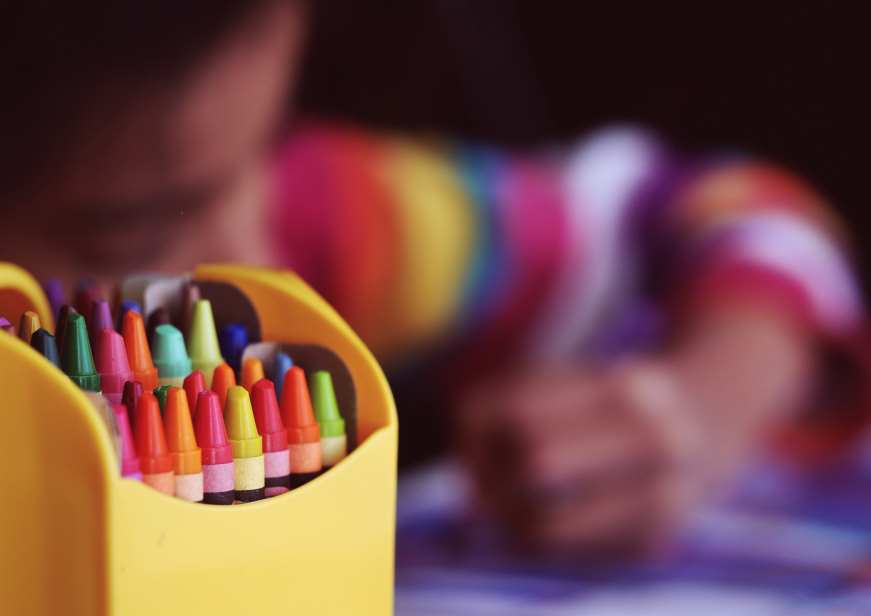
4. Math Materials
Key math concepts are introduced with concrete materials like:
- Number rods for numeral recognition and sequencing
- Golden beads for counting, adding, subtracting
- Colored beads for fractions
- Sandpaper numbers for tactile numeracy
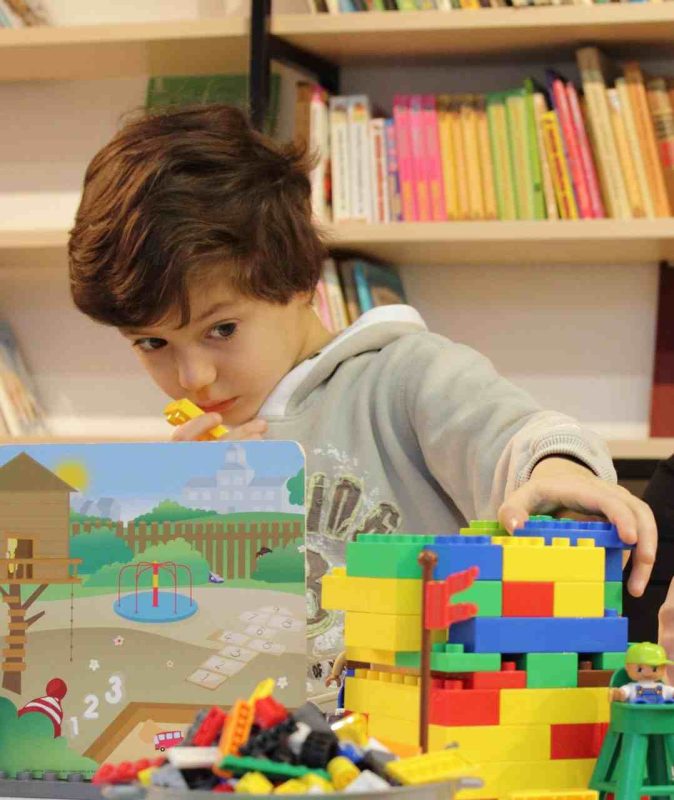
5. Cultural Materials
Cultural awareness and knowledge of the world are fostered through:
- Maps, globes, flags of countries
- Timelines of historical events
- Music, art prints from different cultures
Benefits of Using Montessori Materials
Montessori materials offer wide-ranging benefits that have been validated through research:
- Enhance cognitive skills – Sensorial materials exercised visual, tactile, auditory processing skills better than conventional toys in a 2017 study.
- Support holistic development – Materials address emotional, social, physical, cognitive, and language development domains in an integrated way.
- Promote intrinsic motivation – The hands-on process ignites children’s natural interest and love of learning.
- Enable personalized learning – Children progress at their own pace according to sensitive stages of development.
- Boost academic outcomes – One 2006 study found children in Montessori preschools performed better on math and literacy tests than peers in traditional preschools.
In summary, Montessori materials deliver a highly-effective approach, validated by experts worldwide.
Montessori Materials in Action
In a Montessori classroom, materials are meticulously arranged on low, open shelves allowing easy access. Children choose activities based on their interests and developmental needs. The teacher offers guidance as needed, but respects the child’s self-directed learning process.
Key aspects include:
- Free choice – Children instinctively choose materials they need to advance their abilities.
- Repeated practice – Products remain available so children can apply new skills through repeated, self-driven practice.
- Isolation of concepts – Materials introduce one concept or skill at a time for focused learning.
- Self-correction – Aspects like control of error enable children to recognize and fix mistakes independently.
- Multi-age grouping – Age 3-6 classrooms allow older children to model and assist younger ones, promoting cooperation and learning at all levels.
This process allows children to construct knowledge actively at their own pace.
Montessori Materials for Home Education
Many parents implement Montessori materials at home to nurture children’s development in a natural way. Key tips include:
- Select materials suiting the child’s sensitive stage of growth. Observe what captures their interest.
- Create an organized, beautiful space allowing easy independent access to materials.
- Take an unobtrusive role – children learn through their own exploration rather than instruction.
- Rotate materials periodically to refresh interest.
- Add nature elements like plants, natural light that appeal to children’s senses.
Even without formal schooling, Montessori materials enable parents to provide rich, engaging educational experiences.
DIY Montessori Materials
Many Montessori materials can be handmade easily at home with common household items:
| Item | DIY version |
|---|---|
| Sandpaper letters | Glue sandpaper shapes onto cardstock |
| Color tablets | Paint color swatches on boards |
| Sound cylinders | Fill spice jars with items like rice, beads |
| Number rods | Color wooden dowels with length gradients |
| Letter movable alphabet | Velcro or glue alphabet tiles onto boards |
With creativity and inexpensive supplies, parents can produce functional materials aligned with Montessori principles. Websites like WikiMontessori offer step-by-step instructions for creating materials from scratch. Making DIY Montessori materials is rewarding, cost-effective and boosts resourcefulness.
Choosing and Sourcing Montessori Materials
When selecting traditional Montessori materials, look for:
- High-quality, durable construction from natural materials
- Faithful adherence to Montessori’s original designs
- Company reputation for authentic materials
- Child safety certification
Good sources include:
- Specialized Montessori retailers like Nienhuis, Michael Olaf, and Tim Seldin’s One World Montessori.
- School supply stores – discounted pricing in bulk.
- Montessori schools selling used materials.
- Online marketplaces like eBay and Etsy offer deals on specific items.
Investing in authentic, thoughtfully designed materials creates a rich learning environment for children to thrive.
Montessori Materials and Special Needs Education
A key advantage of Montessori materials is that they can be adapted to support diverse learning needs. Principles like individual pacing and concrete learning are applicable across the spectrum of abilities. Reported benefits include:
- Materials modified with velcro, handles and typoscopes help children with physical disabilities access activities independently.
- Sandpaper letters and sensorial materials provide effective, multi-sensory input for those with learning disabilities.
- The orderly environment reduces distractions for children with ADHD. Materials keep them engaged.
- The social environment helps children with ASD learn communication and social skills.
Montessori materials allow all children to learn meaningfully regardless of developmental variations.
Montessori Materials Beyond Childhood
While designed for early childhood, Montessori materials continue offering benefits into adolescence and adulthood:
| Application | Examples |
|---|---|
| Self-education | Materials for language, math, arts foster continued skill development. |
| Therapy | Sensorial materials help elderly or disabled individuals restore cognitive function. |
| Parent education | New parents use infant/toddler materials for quality bonding and learning experiences. |
| Teacher training | Adults practice with materials to understand how to best introduce them to children. |
Montessori materials thus have versatile applications throughout life to support human development and progress.
Challenges and Misconceptions
Some common challenges and misconceptions about Montessori materials include:
| Challenge/Misconception | Response |
|---|---|
| Too costly | Prioritize investing in a few high-quality materials, supplemented with DIY and household items. Buy used or in bulk when possible. |
| Too academic | Materials are scientifically designed based on developmental needs rather than academics alone. |
| Only for preschoolers | Materials introduced at appropriate sensitive periods continue benefitting older children and adults. |
| Stifle creativity | Choosing activities freely within a thoughtfully prepared environment fosters creativity. |
While these require some clarification, the benefits of Montessori materials are well-established.
Resources for Further Learning
Those interested can find abundant resources to continue exploring:
- The Montessori Toddler by Simone Davies – Toddler parenting with Montessori principles
- Montessori at Home Guide – Free printable by Montessori for Everyone
- American Montessori Society – Information, training programs and school directory
- Montessori Notebook – Activity ideas, printables and blog posts
- North American Montessori Teacher Association – Online learning, workshops and community
These are just a sampling of the wealth of Montessori-focused resources available in books, online, and through expert organizations.
Conclusion
For over 100 years, Montessori materials have helped children joyfully master concepts, skills and independence. These thoughtfully designed, hands-on materials align closely with human developmental patterns. They enable children to construct knowledge by actively exploring and manipulating concrete objects. Extensive research validates the effectiveness of authentic Montessori materials in nurturing children’s growth across intellectual, social-emotional and physical domains.
Parents and educators worldwide implement these materials both in schools and home environments to provide stimulating, developmentally appropriate learning experiences. With creativity and the abundant resources available today, the powerful benefits of Montessori materials can be brought to life for both children and lifelong learners.
FAQs
What are Montessori materials and their purpose?
Montessori materials are specially designed, hands-on learning tools aligned with Montessori educational philosophy. They enable children to develop skills and understanding through active manipulation and exploration. Each material has a specific purpose and introduces concepts in a concrete, multi-sensory way.
How do Montessori materials support child development?
Montessori materials are tailored to align with children’s sensitive periods of development. Using the materials supports development across cognitive, motor, sensory, language, social-emotional, and other domains. The self-directed process fosters independence, concentration, coordination, and problem-solving abilities.
Where can I buy authentic Montessori materials?
Look for reputable Montessori retailers that adhere closely to Dr. Maria Montessori’s original designs. Nienhuis, Michael Olaf, Tim Seldin’s One World Montessori are good sources. Local Montessori schools may also sell used materials.
Are there DIY Montessori materials I can make at home?
Yes, many Montessori materials can be DIYed at home with common household items. Sandpaper letters, color tablets, sensory bottles are some easily made examples. Websites like Montessori for Everyone offer instructions.
How do I choose the right Montessori materials for my child’s age?
Observe your child’s interests and abilities to select materials suiting their developmental stage. Focus on one key skill at a time. Montessori teachers can also help determine appropriate materials to introduce.
What are the essential Montessori materials for a home setup?
Good foundational materials are sandpaper letters, rod and number exercises, practical life activities, sensory refinement tools and art materials. Have only a few materials available at a time and rotate based on the child’s needs.
How can I use Montessori materials to teach math concepts?
The golden beads and colored bead bars introduce numeration, place value, operations and fractions in a concrete way. Cards and counters can illustrate more complex concepts. Follow the child’s lead in discovering and applying ideas.
Can Montessori materials be used in traditional education settings?
Yes, adding Montessori materials can be very beneficial in schools adhering to other pedagogies. The hands-on materials provide a great way to reinforce learning.
Are Montessori materials suitable for children with special needs?
Montessori materials are highly adaptable for children with special needs. The sensory materials provide focused input, while the self-directed approach accommodates different pacing and capabilities.
What are some Montessori-inspired activities using everyday items?
Transferring water between bottles, scooping beans with spoons, sorting household objects by shape or color, and scrubbing surfaces are everyday practical life activities that foster coordination and concentration.
References
https://www.montessorimaterials.com/
https://kidadvance.com/
https://amshq.org/Educators/Montessori-Marketplace
https://www.alisonsmontessori.com/
https://affordmontessori.com/
https://www.montessori-n-such.com/

